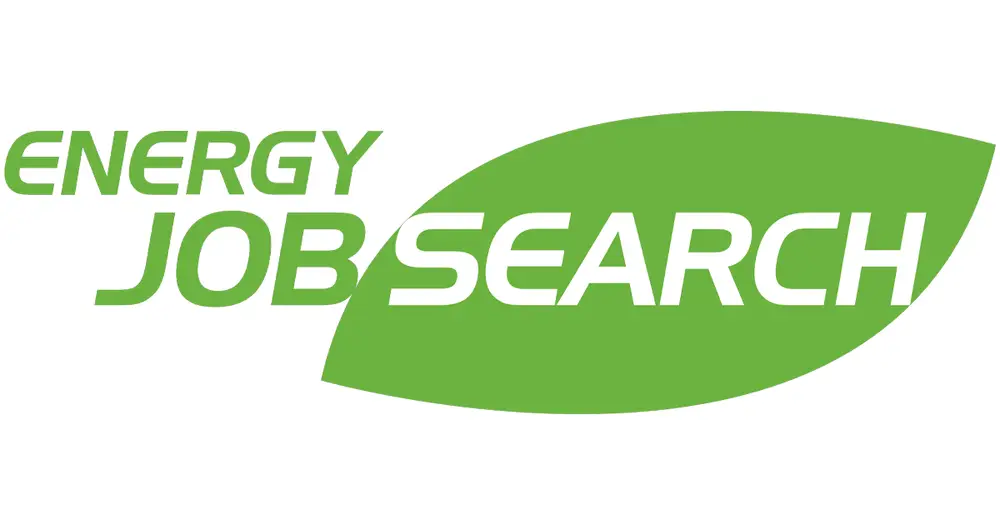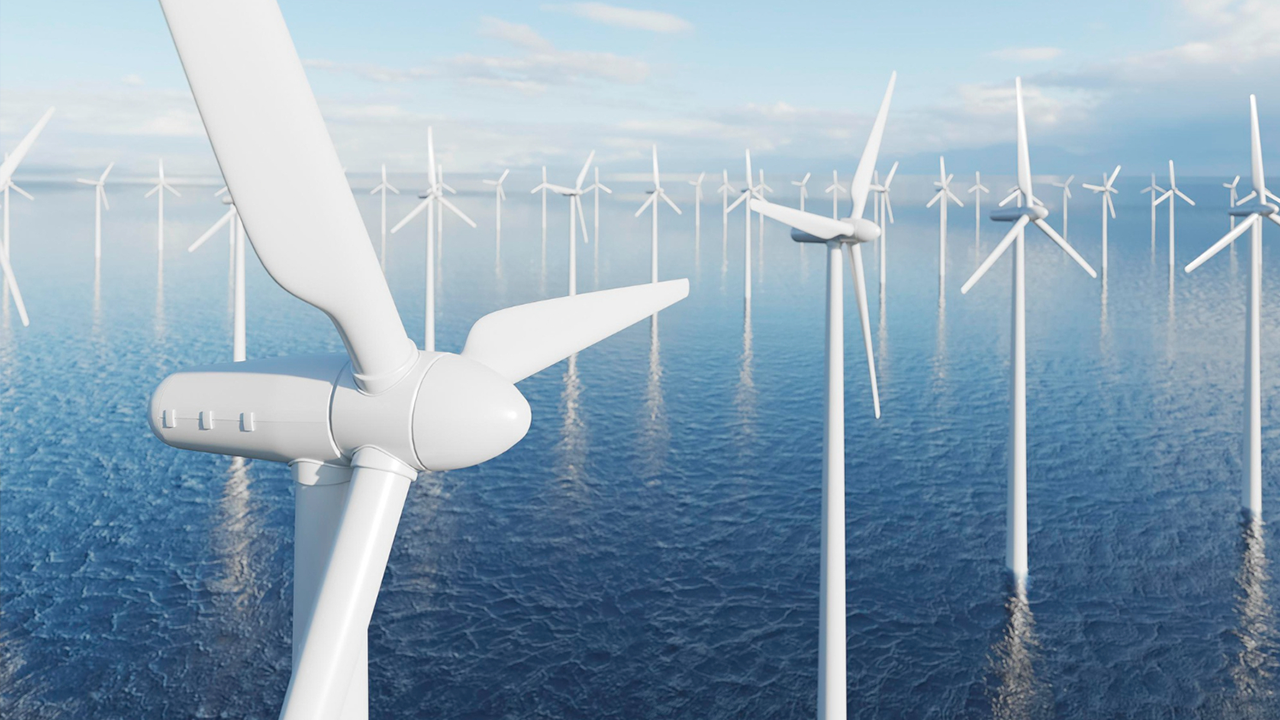Wind turbines are the modern equivalent of a windmill, first created in 1887 by a Scottish engineer.
However, modern turbines can do more than power grinding stones. They can convert the motion of the spinning blades into energy and then electricity through the connected generator.
Wind energy is categorized into onshore and offshore, depending on where the turbines are located to capture the wind. Both types have very similar operations with similar advantages and disadvantages.
How Wind Energy Works
A wind turbine uses wind to turn its blades to make electricity.
- Wind drives the action: when wind flows over the curved blades, the difference in air pressure makes the blades rotate.
- Blades rotate: The rotating blades are connected to the central shaft and the rotor.
- Shaft rotates: When the rotor turns, it affects a connected drive shaft that turns an electric generator.
- Generator conversion: The generator converts the mechanical energy of the rotor spinning into actual electrical energy.
- Electrical transfer: The generated electricity is then transmitted through a system of power lines.
- Distribution of energy: The power lines are part of an electrical grid that distributes electricity to homes and businesses. A grid operator manages the balance between supply and demand.
The missing element in this explanation of how wind energy works is people.
Capturing the wind to create energy is a complicated process that uses physics, engineering, and smart infrastructure. The process requires skilled workers for installing, maintaining, repairing, and improving wind turbines.
What Are the Advantages of Wind Energy?
Wind energy offers numerous advantages over fossil fuels and other renewable energy sources, although it shares some similarities with solar energy.
It owes its growing popularity as a renewable energy source is thanks to the improvements that have been made as wind energy was introduced as a possible competitor to oil and gas.
1. Cost-effective Long-term
Although wind energy has high initial costs, once you purchase or lease the land and the turbines are installed, the cost of maintenance and upkeep is relatively low.
As wind energy is adopted in more places as a renewable source to supplement or replace fossil fuels, naturally, technology improves.
Wind energy has moved from an alternative energy source with storage issues to become a competitive alternative to traditional fossil fuels for your home.
2. Clean and Renewable
As a renewable energy source, wind energy is clean and green, it produces no air pollution or greenhouse gas emissions while it’s operating.
Using wind energy instead of fossil fuels reduces your carbon footprint. It decreases the need for fossil fuels, like oil, natural gas, and coal, which release harmful pollutants into the atmosphere.
3. Scalable Infrastructure
Wind infrastructure is highly scalable because it has fewer limitations than other renewable energy sources. It’s easy to implement when land is available and conditions are favorable.
Utilizing larger turbines that can produce more electricity, combined with extensive farms, has enabled wind energy to meet greater demand, and a growing positive image.
As wind becomes a more desirable source of renewable energy, production is expanding to meet demand. The expansion has resulted in a lower cost of production and a surge in wind energy projects.
Turbines can grow or shrink. Smaller residential wind turbines have also enabled consumers to harness this renewable energy source and generate power for their homes and communities.
4. Job Creation
Wind farms and the installation of wind turbines can be a positive force in your community by supporting local economies, fostering growth, and creating wind jobs throughout the turbines’ lifecycle.
Since 2023, over 150,000 people in the United States have employment in the wind industry across all 50 states. Wind turbine service technicians are one of the fastest-growing professions in the U.S., both within and outside the renewable energy sector.
Wind energy creates jobs that you can get with a variety of experience and skill sets. Workers are needed from the planning stage up to the moment turbines are decommissioned.
It’s estimated that, on average, counties that install wind generation can experience an increase in employment opportunities at a rate of 1% per 100 megawatts of installed capacity.
This is in comparison to areas that don’t install wind generation and equates to about 100 net jobs for a typical rural county where wind turbines are often located.
5. Community Support
In addition to providing jobs, wind projects also support local communities financially.
Wind energy installations, such as wind farms, generate over $2 billion annually for rural communities through tax and land lease payments.
They can then use that money to fund schools, reduce the financial burdens for homeowners, and help fund local infrastructure projects.
6. Energy Independence
As the effects of climate change become more apparent, energy independence is becoming more important for businesses and governments. Using renewable energy is both necessary and advantageous.
The less a country relies on imported and often expensive fossil fuels, the more independent it can become from the countries that produce these fuels. As a domestic resource, wind energy supports economic growth.
Wind energy is energy independence. It doesn’t require a dependence on imported fossil fuels, which are finite resources. It also helps to move countries away from fossil fuels and the geopolitical tensions that can arise from fluctuations in oil prices.
What Are the Disadvantages of Wind Energy?
While wind energy has plenty of advantages over other forms of energy, it also has some disadvantages, in part due to the size of the turbine and how it captures the wind.
Here are some of the most common disadvantages to wind energy often cited by residents living near wind farms and scientists studying them.
1. Remote Location
One of the biggest disadvantages of wind projects is the wind turbines themselves. They pose disadvantages both practically and aesthetically.
Installation typically occurs in remote areas where the existing network needs to be upgraded to bring electricity from the wind farm to local population centers.
2. Visual Impact and Noise Pollution
Aesthetically, wind turbines are large structures that can have a negative impact on the surrounding landscape and environment.
Due to their size, nearby residents who have seen a wind project move into their community may perceive them as unsightly or having a negative visual impact.
The sound produced by wind turbines when they’re active can potentially disrupt wildlife and be an annoyance to local residents.
3. High Infrastructure Land Use
In addition to their visual impact, wind turbines and wind farms take up a significant amount of space in the air. Turbines can vary in size from small residential units to large commercial units and extra-large offshore wind turbines.
In 2023, the average rotor diameter of commercial wind turbines was over 133.8 meters (approximately 438 feet), and they are typically located in rural areas with low population density on farmland, where there are fewer obstacles to block the wind.
Although the turbines occupy only a small amount of land on the ground, wind energy is typically considered to require a vast amount of land because it needs a large area.
Common complaints you may have heard are that the land could be used as grazing land, and is wasted on turbines. In response, some wind farms also serve as grazing land, as the space beneath the rotors remains unused.
4. Intermittent Energy
Wind, like solar, is an inconsistent source of energy. Although wind farms are typically located in areas that experience higher wind speeds, the speed and direction of the wind are subject to fluctuations from day to day.
Unlike fossil fuels, which can release energy as long as there is fuel to burn, wind energy grids have to make allowances for periods when there is little to no wind.
Grid operators have to work strategically when it comes to renewable energy. They use either stored energy from periods when the supply is high to meet demands when weather conditions result in a low supply.
5. High initial costs
Wind energy requires a substantial upfront investment to cover the costs of installation and related infrastructure.
Commercial wind turbines can cost anywhere between $2 million and $5 million, with offshore turbines costing up to twice as much. Residential and much smaller turbines can cost between $25,000 and $50,000, depending on their size.
Land must also be purchased to house the turbines and is often leased for use throughout the wind farm’s lifecycle, resulting in increased costs.
6. Potential negative impact on wildlife
Wind projects can impact local wildlife when they interact, although wind projects rank lower than other types of energy projects.
Spinning blades can injure or kill wildlife if they collide with them, including birds and bats. The presence of wind turbines can also impact the natural habitats of local wildlife.
Conclusion
Wind energy has several advantages, most importantly, the provision of clean and renewable energy. It’s become a cost-effective energy source that can compete with solar and biomass energy.
However, there are also disadvantages, such as the impact on wildlife, high initial costs, and public relations issues that still require attention if we hope to integrate wind energy into the lives of consumers.
If you are a job seeker currently in a wind project aiming to advance or looking to transition from one renewable energy source to another, wind energy offers a stable career with the opportunity to help power the world.








